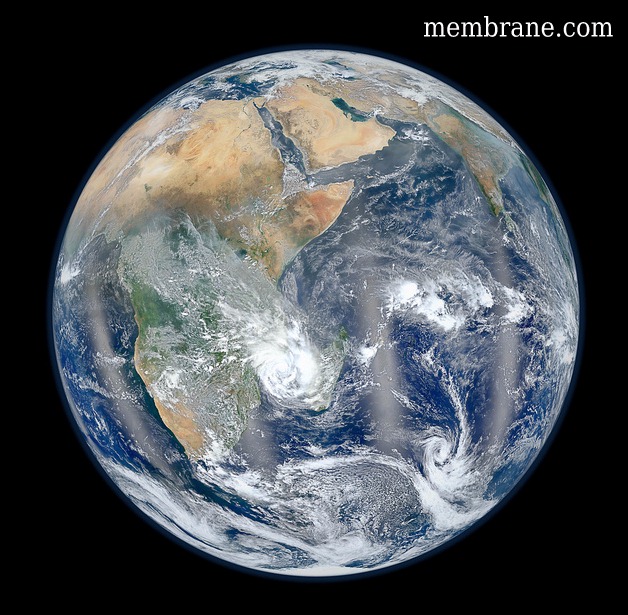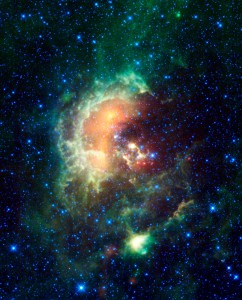Earth
Friday, February 3rd, 2012
Special Picture Of Earth
Information:
Go here to view an image that explains how composite images like these are created: www.flickr.com/photos/gsfc/6803619953
Responding to public demand, NASA scientists created a companion image to the wildly popular ‘Blue Marble’ released last week (January 25, 2012). www.flickr.com/photos/gsfc/6760135001
The new image is a composite of six separate orbits taken on January 23, 2012 by the Suomi National Polar-orbiting Partnership satellite. Both of these new ‘Blue Marble’ images are images taken by a new instrument flying aboard Suomi NPP, the Visible Infrared Imaging Radiometer Suite (VIIRS).
Compiled by NASA Goddard scientist Norman Kuring, this image has the perspective of a viewer looking down from 7,918 miles (about 12,742 kilometers) above the Earth’s surface from a viewpoint of 10 degrees South by 45 degrees East. The four vertical lines of ‘haze’ visible in this image shows the reflection of sunlight off the ocean, or ‘glint,’ that VIIRS captured as it orbited the globe. Suomi NPP is the result of a partnership between NASA, NOAA and the Department of Defense.
Credit: NASA/NOAA
For more information about Suomi NPP go to: www.nasa.gov/npp
NASA Goddard Space Flight Center enables NASA’s mission through four scientific endeavors: Earth Science, Heliophysics, Solar System Exploration, and Astrophysics. Goddard plays a leading role in NASA’s accomplishments by contributing compelling scientific knowledge to advance the Agency’s mission.
